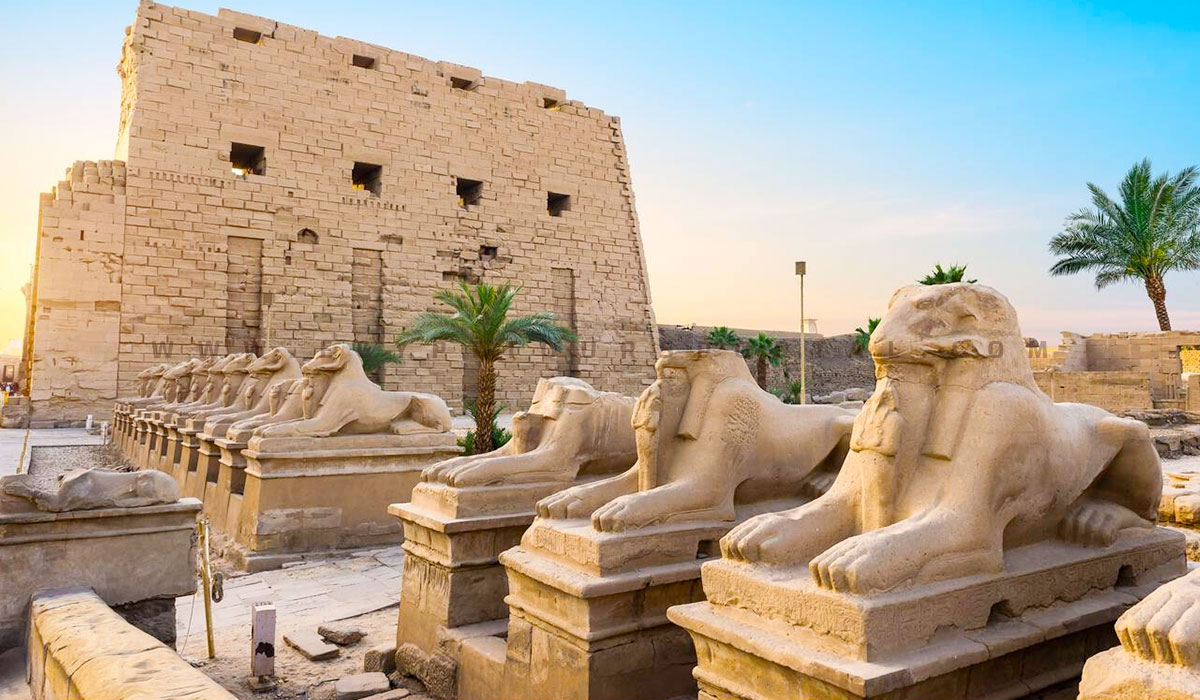Ancient Egypt stands as a monumental testament to human ingenuity and architectural prowess, showcasing structures that have fascinated the world for millennia. From the majestic temples dedicated to their gods to the enigmatic Sphinx that guards the Giza Plateau, these architectural wonders tell tales of a civilization deeply intertwined with its beliefs and society. This blog post delves into the construction techniques of ancient temples, the significance of the Sphinx, and the evolving designs of tombs that served as final resting places for pharaohs and nobility. We will explore the materials and innovations that defined these structures and emphasize the importance of preserving these historical marvels for future generations. Join us on this journey to uncover the architectural legacy of Ancient Egypt.
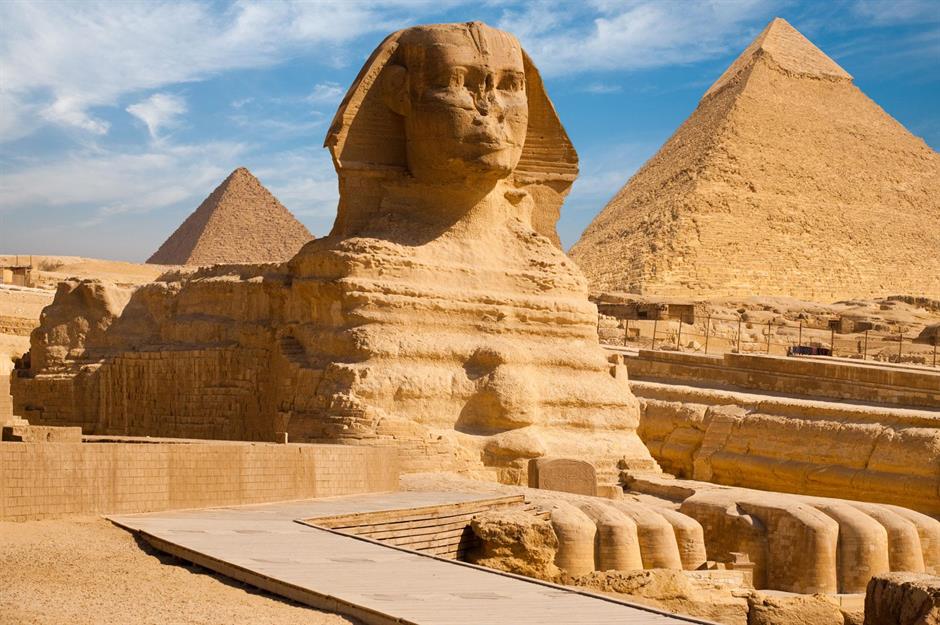
Construction Techniques of Ancient Egyptian Temples
The remarkable architectural developments of ancient Egyptian temples are a testament to the ingenuity and resourcefulness of a civilization that thrived along the banks of the Nile; these structures not only served as places of worship and celebration for the deities but also reflected the social hierarchy and the power dynamics of the pharaohs who commissioned them, showcasing a profound understanding of engineering principles, carefully selected materials, and a workforce that was both skilled and dedicated. The construction techniques employed by ancient Egyptians were advanced for their time and involved a combination of precise planning, innovative methods, and a systematic approach to labor, enabling them to erect some of the most monumental and enduring structures in human history, many of which continue to mesmerize and inspire modern architects and archaeologists alike to this day.
Foundation and Layout
The initial step in the construction of ancient temples involved careful site selection, which often included considering the alignment with celestial bodies, the surrounding landscape, and the proximity to water sources, thus ensuring the long-term stability and significance of the temple within its religious context. Once a site was chosen, a rigorous process of laying out the foundation was executed, during which skilled surveyors employed simple tools, such as ropes and pegs, to create accurate measurements, thereby ensuring that the entire structure was aligned with key cardinal points, reflecting the ancient Egyptians' deep connection to both the cosmos and their deities. The foundation itself comprised several layers of stones or mudbrick, providing a robust base that could withstand the test of time and the pressures from the elements, ultimately allowing these extraordinary sacred spaces to endure for millennia.
Materials and Techniques
The materials used in temple construction represented an impressive array of natural resources that were thoughtfully selected for their properties and availability; limestone and sandstone were often quarried locally, while granite, which showcased both durability and aesthetic appeal, was transported from more distant regions, highlighting the extensive trade networks and logistics established by ancient Egyptians. One notable technique involved the use of huge granite blocks that were expertly cut using copper tools, followed by ingenious methods of transportation utilizing sleds, lubricated sand, and manpower to maneuver these colossal stones into place, all of which underscored the monumental effort and teamwork invested in each project. Additionally, intricate carvings and inscriptions were meticulously engraved into the temple walls, with artisans often working on-site to create divine images and hieroglyphs that would not only adorn the structure but also serve to immortalize the pharaoh's achievements and religious devotion.
- Careful site selection based on religious significance and alignment with celestial bodies.
- Use of local materials such as limestone and sandstone, with granite sourced from distant locations.
- Advanced transportation techniques including sleds and lubrication for moving massive stone blocks.
- Precise foundation layout ensuring structural stability and cosmic alignment.
- Intricate carvings and hieroglyphs reflecting religious beliefs and the pharaoh's legacy.
Significance of the Sphinx in Ancient Egyptian Architecture
The Great Sphinx of Giza, a monumental statue with the body of a lion and the head of a pharaoh, stands as one of the most iconic and enduring symbols of Ancient Egyptian architecture, reflecting not only the impressive engineering skills of its creators but also the profound cultural and religious ideologies that permeated the ancient civilization and influenced various architectural developments throughout the centuries. Serving as a guardian of the Giza Plateau, the Sphinx embodies a unique fusion of human and animal characteristics, representing both the power and the divinity of the pharaoh, and firmly situating itself as a critical element in the landscape of Ancient Egyptian mortuary practices and temple designs. The Sphinx's architectural significance extends beyond its sheer size and grandeur; it encapsulates several essential elements related to Ancient Egyptian belief systems and the socio-political hierarchies that defined the era. The Sphinx, with its enigmatic smile, communicates not just through its physicality but also through the intricate mythology that surrounds it, symbolizing strength and wisdom while offering protection to the sacred sites it overlooks. Furthermore, the placement of the Sphinx in proximity to the Giza Pyramids serves to underscore its role in the afterlife journey of the pharaohs, serving as a sentinel to their eternal resting places while also drawing visitors and worshippers alike to the architectural marvels that line the horizon. To truly grasp the significance of the Sphinx within Ancient Egyptian architecture, one must consider the following key aspects:
- Symbol of Royalty: The Sphinx represents the divine nature of the pharaoh, implying the ruler's half-human, half-divine existence and reinforcing the concept of kingship in Ancient Egypt.
- Religious Guardian: Positioned at the entrance to the Giza Plateau, the Sphinx served as a protector of the tombs and temples, warding off evil spirits and safeguarding the souls of the deceased.
- Architectural Innovation: The crafting techniques and materials used in the construction of the Sphinx set a precedent for subsequent monumental buildings, influencing the architectural language of later structures.
In conclusion, the Sphinx of Giza stands not merely as a remarkable piece of art but as a fundamental component of Ancient Egyptian architectural legacy, carrying with it layers of meaning that speak to the civilization's values, beliefs, and advancements in construction techniques.
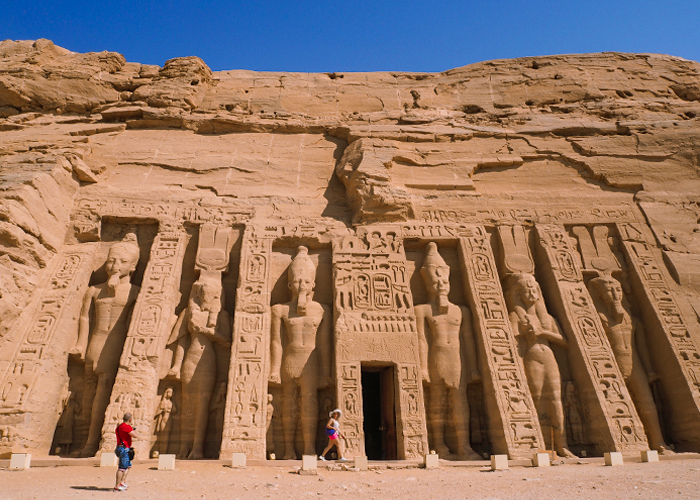
Role of Tombs in Ancient Egyptian Society
In the rich tapestry of Ancient Egyptian culture, the role of tombs transcended mere burial places; they served as elaborate structures that epitomized the Egyptians' deep belief in the afterlife, as well as their social hierarchies and religious convictions, reflecting an intricate understanding of both life and death. Tombs were not solely the final resting places for the deceased, but rather, they were meticulously designed sanctuaries that aimed to ensure the immortal journey of the soul, and thus, they were imbued with symbols and artifacts that would accompany the dead into the otherworldly realms. The society's beliefs in the significance of the afterlife spurred monumental architecture, resulting in tombs that were not only symbols of status but also mirrors of the deceased's life, spirituality, and aspirations, ultimately influencing the cultural landscape of Ancient Egypt.
- Protection of the body: Tombs were constructed to safeguard the mummified remains from natural elements and grave robbers.
- Space for ritualistic practices: Tombs provided a space for the family and priests to conduct rituals that honored the deceased.
- Reflection of social status: The size and opulence of a tomb often reflected the rank and wealth of the individual interred.
The architectural developments surrounding tomb construction reveal a society that placed immense importance on the journey after death, as well as a sophisticated understanding of materials and building techniques that continue to astonish historians today. From simple burial pits to elaborately decorated chambers adorned with hieroglyphics and murals, Ancient Egyptian tombs evolved over time to reflect the changing societal values and artistic expressions of various dynasties, signifying a cultural evolution that was both profound and intricate. These burial sites not only catered to the needs of the dead but also served as a powerful reminder to the living about the values and beliefs that permeated their existence, thus reinforcing the social and spiritual fabric of Ancient Egyptian society.
| Tomb Type | Features | Significance |
|---|---|---|
| Saqqara (Step Pyramid) | Large pyramidal structures, stacked mastabas | First monumental stone structure, symbolizing the deceased's ascension |
| Valley of the Kings (Rock-cut tombs) | Complex chambers with grand décor | Final resting place for pharaohs, protecting them from tomb robbers |
| Mortuary Temple | Adjacent to the tomb, with altars for offerings | Space for the living to conduct rituals in honor of the deceased |
With the lavish offerings found in the tombs, including food, jewelry, and other items believed to be needed in the afterlife, it becomes evident that burial sites were designed with a dual purpose: to honor the deceased while also reinforcing the beliefs of the living about life after death. As the walls of tombs were often inscribed with prayers, hymns, and spells meant to guide the dead through the afterlife, it also illustrated the intricate relationship between the deceased and the divine, highlighting a society deeply invested in the idea of continuity beyond mortal life. Furthermore, the elaborate burial practices and the ostentatious nature of the tombs epitomized not only the reverence towards the dead but also a socio-political tool that asserted the power and legacy of the elite within Ancient Egyptian civilization. Ultimately, the role of tombs in Ancient Egyptian society does not merely signify where people were buried, but rather encapsulates a complex interplay of beliefs, artistic endeavors, and social structures that together reveal the profound reverence a civilization had for its deceased, forever impacting their architectural developments.
Innovations in Temple Design during Ancient Egypt
The architectural developments that flourished during Ancient Egypt were not simply a reflection of the civilization’s advanced engineering skills, but also an embodiment of the rich spiritual and cultural beliefs that permeated every aspect of Egyptian life, and among these remarkable innovations, temple design stands out as a critical aspect of religious expression and artistic achievement, showcasing the Egyptians' deep reverence for their gods and the afterlife.
During various periods of Ancient Egyptian history, particularly from the New Kingdom onwards, the temples evolved dramatically in terms of size, complexity, and ornamentation, and the introduction of colossal structures, such as the grand temples of Karnak and Luxor, revealed the Egyptians' mastery of architectural techniques and their ability to manipulate space in ways that created both awe-inspiring interiors and monumental exteriors.
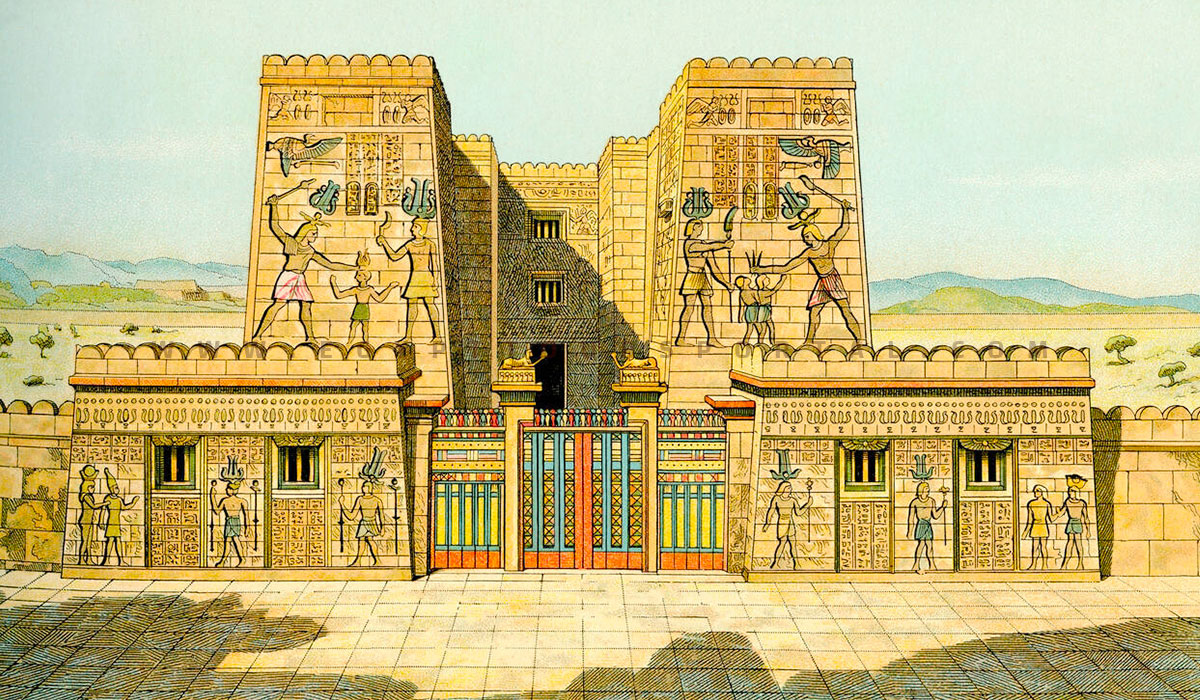
The Use of Columns and Hypostyle Halls
One of the most striking innovations in temple design during Ancient Egypt was the extensive use of columns, which not only provided structural support but also played a crucial role in enhancing the aesthetic quality of the space, with each column intricately carved and often adorned with hieroglyphics and images of gods, which served both a decorative function and a narrative one.
The hypostyle hall, a vast room filled with many columns, emerged as a prominent feature in temple architecture, allowing for grand ceremonies and rituals to take place beneath a roof supported by these towering pillars, whose height created a sense of grandeur and emphasized the divine connection between the earthly space and the celestial realm.
The Integration of Symbolism in Design Elements
Moreover, the incorporation of symbolic elements into the design of temples was another hallmark of Ancient Egyptian architecture, with features such as the sacred lake often present within temple precincts, representing the primordial waters from which all life emerged, and serving a dual purpose of enhancing ritual practices and providing a tranquil space for worshippers.
The orientation of temples was also meticulously planned, with many aligned to the cardinal points of the compass, reflecting the Egyptians' belief in the cosmic order and their desire to connect their earthly existence with the divine, thereby making each temple not just a place of worship, but a microcosm of the universe itself.
The Symbolism Behind the Sphinx in Egyptian Culture
The Sphinx, an iconic figure that continues to captivate the imagination of people worldwide, possesses a rich tapestry of symbolism that intertwines with various aspects of ancient Egyptian culture, where it stands as a magnificent symbol of strength, protection, and wisdom, evoking the mystique of a civilization renowned for its monumental architecture and profound spiritual beliefs. This enigmatic creature, with the body of a lion and the head of a pharaoh, particularly embodies the fusion of human intelligence and animal prowess, illustrating the balance that ancient Egyptians sought to achieve between the earthly realm and the spiritual world. As a guardian, the Sphinx was often positioned in such a way as to oversee important temples and burial sites, serving as a formidable protector against any form of malevolent forces that might threaten these sacred spaces and the eternal life believed to wait for the deceased.
Guardian of Sacred Spaces
The role of the Sphinx as a guardian is further emphasized in its association with the Pyramids of Giza, where it was erected strategically to face the rising sun, symbolizing rebirth and the promise of a new day. This positioning not only reinforces its significance as a protector of the pharaohs resting in the nearby tombs but also reflects the ancient Egyptians' deep reverence for the sun god Ra, whose comings and goings were central to their cosmology and understanding of life and death. Moreover, this connection to solar symbolism reveals how integrated the Sphinx was in the broader tapestry of religious beliefs, where it functioned as a bridge not just between mortals and the divine, but also between the physical and spiritual realms, resonating with ideas of resurrection as they celebrated the afterlife.
Symbol of Royal Authority
The depiction of the Sphinx with a pharaoh’s head underscores its connection to royal authority, as it served to solidify and legitimize the power of the ruling class, reinforcing the divine right of pharaohs to rule over their subjects and the lands of Egypt. This representation allowed the ancient Egyptians to convey the idea that their leaders were not merely human beings, but rather demigods embodying both earthly and celestial virtues, thus appealing to the populace's sense of loyalty and reverence. Furthermore, by incorporating the Sphinx into royal iconography, the ancient Egyptians were able to craft a visual language that reiterated the importance of upholding cosmic order (Maat) and the eternal cycle of life, which the Sphinx so vividly symbolized through its enduring presence amidst the sands of time, reminding all who gazed upon it of the legacy and responsibilities of kingship in their society.
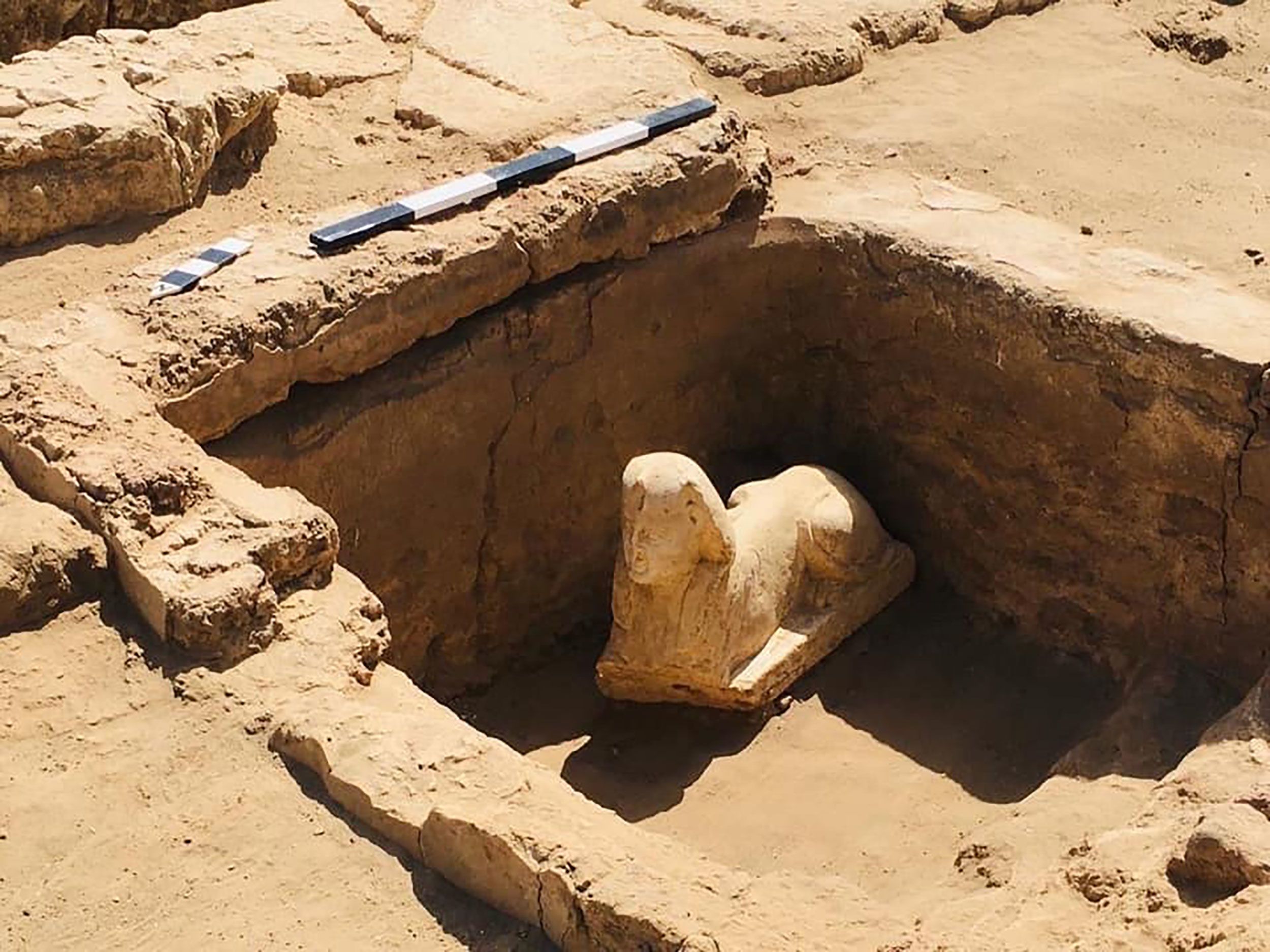
Evolution of Tomb Structures in Ancient Egypt
The evolution of tomb structures in Ancient Egypt is a fascinating journey that encapsulates the significant advances in architectural techniques and spiritual beliefs, reflecting the changing dynamics of society and technology over thousands of years, showcasing how these burial sites transitioned from rudimentary graves to magnificent complexes that stand as testaments to the civilization's ingenuity and reverence for the afterlife. Initially, burials took place in simple pits, which gradually evolved into more elaborate structures known as mastabas, featuring flat roofs and sloped sides, designed to provide protection for the deceased as well as to signify their social status, and this marked the beginning of a profound architectural progression that would culminate in the grandeur of the pyramids. As time progressed, the mastaba tombs experienced a transformation whereby their design was further refined and embellished with intricate carvings and inscriptions that celebrated the life of the deceased, providing insight into their social standing and journey in the afterlife. When the Old Kingdom emerged, the ascendance of the pyramid as a tomb type became apparent, leading to the construction of iconic structures such as the Great Pyramid of Giza, which served not only as final resting places for pharaohs but also as monumental representations of their power, divinity, and the belief in the afterlife, symbolizing a remarkable architectural height achieved by the Egyptians. In the Middle Kingdom, a shift occurred when the focus moved toward hidden tombs carved into rock cliffs, transitioning from extravagant monumental structures to those that embraced a more secluded and secure design, offering better protection against grave robbers while still adhering to the belief in the sustenance of the afterlife. Furthermore, the introduction of increasingly sophisticated burial practices during the New Kingdom led to a diversification in tomb architecture, with the advent of the grand mortuary temples adjacent to royal tombs and the famous Valley of the Kings becoming the preferred burial site for numerous pharaohs, revealing a deepening complexity in both spiritual beliefs and architectural refinement.
- Mastabas: Early flat-roofed tombs with sloping sides.
- Pyramids: Monumental structures symbolizing power and beliefs in the afterlife.
- Rock-cut tombs: Designed for secrecy and protection during the Middle Kingdom.
- Valley of the Kings: A collection of elaborate royal tombs showcasing the craftsmanship of the New Kingdom.
- Mortuary temples: Structures dedicated to the worship of the deceased.
Throughout the diverse periods of Ancient Egyptian history, the evolution of tomb structures illustrates a remarkable interplay between religious beliefs, social hierarchies, and architectural advancements, underlining the Egyptians' enduring desire to honor the dead and ensure their safe passage into the afterlife. This evolution not only provided the deceased with a lasting resting place but also created a rich tapestry of cultural and architectural practices that would influence generations to come.
Materials Used in Building Ancient Egyptian Temples
In the grand narrative of ancient Egyptian civilization, the materials used in constructing temples not only signify the architectural prowess of the time but also reflect the religious and cultural priorities that shaped the society, showcasing how limestone, sandstone, and clay were integral in the creation of these awe-inspiring structures, each serving its distinct purpose yet contributing to a cohesive architectural vision. The enduring legacy of these temples can be traced to their carefully chosen materials, as limestone was often quarried from nearby Tura, providing a pale, durable stone that could withstand the test of time while sandstone was utilized for its colorful variations and strength, thus significantly influencing the aesthetic and structural characteristics of the temples throughout the eras. Clay, on the other hand, played a critical role, especially in the construction of mud-brick temples which characterized earlier periods, highlighting the adaptability of ancient Egyptians to their environment and resources. The use of granite is particularly notable in the construction of monumental structures, especially in the temples dedicated to the powerful gods of the ancient pantheon, as the hardness of this igneous rock provided not only stability but also an imposing presence that mirrored the might of the deities to whom they were erected. Additionally, the incorporation of precious stones and metals, such as gold and lapis lazuli, in decorative elements of temple interiors further exemplifies the wealth and religious devotion of the society, as these materials not only beautified the sacred spaces but also conveyed deep spiritual significance, providing a connection between the divine and the earthly realms.
- Limestone: A primary building material due to its availability and durability, commonly used for massive walls and ornamental features.
- Sandstone: Valued for its varied colors and strength, often used in the façades and sacred areas of temples.
- Granite: Employed in significant structural components due to its hardness, used for columns and gateway constructions.
- Clay: Utilized in the earliest mud-brick temples, demonstrating ingenuity in resource use during ancient times.
- Precious stones and metals: Incorporated in decorative aspects, showcasing wealth and religious significance in temple interiors.
In conclusion, the selection of materials for ancient Egyptian temples was not merely a matter of availability or practicality; rather, it was a carefully considered choice intertwined with the spiritual and cultural significance of the structures themselves, as each material contributed not only to the stability and beauty of the temples but also to the overarching narrative of Egyptian civilization and its profound dedication to worship and the divine. The lasting impact of these architectural developments can be seen today, where the remnants of ancient temples still stand as a testament to the ingenuity and artistic creativity of one of the most remarkable civilizations in history, offering invaluable insights into the past and reminding us of the architectural marvels that continue to inspire and educate future generations. Through the study of these materials, we glean an understanding of how the ancient Egyptians harmonized their resources with their religious beliefs to create structures that resonate through millennia, highlighting the nexus of faith and craftsmanship that defines one of humanity’s greatest architectural legacies.
Importance of Preservation Efforts for Ancient Egyptian Architectural Wonders
The remarkable architectural developments that defined Ancient Egypt, such as the grand temples, monumental sphinxes, and intricate tombs, stand as testaments to the ingenuity and creativity of a civilization that flourished thousands of years ago, and yet, despite their monumental significance, these stunning structures face the relentless onslaught of time, natural weathering, human interference, and pollution, which all underline the critical need for dedicated preservation efforts to ensure that these architectural wonders endure for future generations. With factors such as climate change, urban expansion, and the growing demands of tourism placing immense pressure on these ancient sites, it has become increasingly vital not only to identify and implement effective preservation strategies but also to foster public awareness and support for the safeguarding of these irreplaceable cultural heritage sites. One of the most pressing challenges in the preservation of Ancient Egyptian architectural wonders is the sheer scale and complexity of the tasks involved; these include stabilizing structural elements, restoring faded inscriptions and artworks, and mitigating environmental impacts that threaten the very foundations of these structures. Additionally, funding and resource allocation play a crucial role in determining the success of preservation initiatives, as many projects often rely on international cooperation, governmental support, and the efforts of dedicated non-governmental organizations, all of which must work in tandem to achieve meaningful results in the face of adversity. Consequently, fostering a culture of preservation not only involves the tangible repairs and restorations, but is also about nurturing an appreciation for Egypt's rich historical narrative and the lessons that these architectural developments can impart to present and future societies. To further illustrate the importance of preservation efforts, consider the following table that encapsulates the various dimensions involved in maintaining Ancient Egyptian architectural sites:
| Preservation Aspect | Description |
|---|---|
| Structural Integrity | Ensuring that the physical integrity of the structures is maintained, which can involve repairing cracks, reinforcing walls, and stabilizing foundations. |
| Cultural Heritage Education | Promoting understanding and respect for Ancient Egyptian history through educational programs and community involvement to instill a sense of stewardship among local populations and visitors. |
| Adaptive Management | Implementing strategies that adapt to environmental changes and human impacts to minimize damage to the sites while accommodating tourism and other activities. |
The complex tapestry of challenges faced in safeguarding these architectural developments necessitates a multi-faceted approach, where cooperation among various stakeholders, including government agencies, cultural organizations, and the local community, is paramount for sustainable preservation. Moreover, harnessing modern technology and innovative methods in conservation can yield tremendous benefits, allowing experts to better document, analyze, and restore these treasured sites while enhancing accessibility for scholars and tourists alike. Ultimately, the ongoing commitment to preserving Ancient Egyptian architectural wonders not only honors the achievements of a remarkable civilization but also serves as a vital link for current and future generations to explore and appreciate the enduring legacy of humanity's artistic and architectural endeavors. In conclusion, as we reflect on the critical importance of preservation efforts for Ancient Egyptian architectural wonders, it is crucial to recognize that these efforts are not simply about maintaining physical structures; they also embody a respect for history, culture, and identity that transcends time. By investing in preservation, we safeguard not just the remnants of the past but also the stories and lessons that lie within them, ensuring that the legacy of architectural developments in Ancient Egypt continues to inspire awe and appreciation for millennia to come. Ultimately, it is our collective responsibility to advocate for and engage in practices that protect these treasures, ensuring that they will remain a source of wonder and learning for generations ahead.
Frequently Asked Questions
What were the primary materials used in ancient Egyptian architecture?
Ancient Egyptian architects mainly used limestone, sandstone, and granite to construct their monuments, including temples and tombs.
How did the design of temples reflect ancient Egyptian beliefs?
Temples were designed to reflect the sacred relationship between the gods and the pharaohs, featuring elaborate decorations and alignments with astronomical events.
What is the significance of the Great Sphinx of Giza?
The Great Sphinx symbolizes strength and wisdom, believed to guard the pharaoh's tomb and represent the pharaoh himself, combining human intellect with lion-like power.
What architectural features are common in ancient Egyptian tombs?
Common features of ancient Egyptian tombs include burial chambers, intricate wall paintings, and non-visible shafts and tunnels to protect against tomb robbers.
What role did mathematics and astronomy play in ancient Egyptian architecture?
Mathematics and astronomy were essential for the precise alignment of structures and to ensure that temples and pyramids faced specific cardinal points and celestial events.
How did the construction of the pyramids influence later architectural developments?
The construction techniques used in the pyramids set foundational standards for engineering, influencing later architectural developments in both Egyptian and other cultures.
What are some notable ancient Egyptian temples, and what do they symbolize?
Notable temples include Karnak and Luxor, which symbolize the power of the gods and the divine right of pharaohs, serving as places of worship and ceremonial gatherings.


